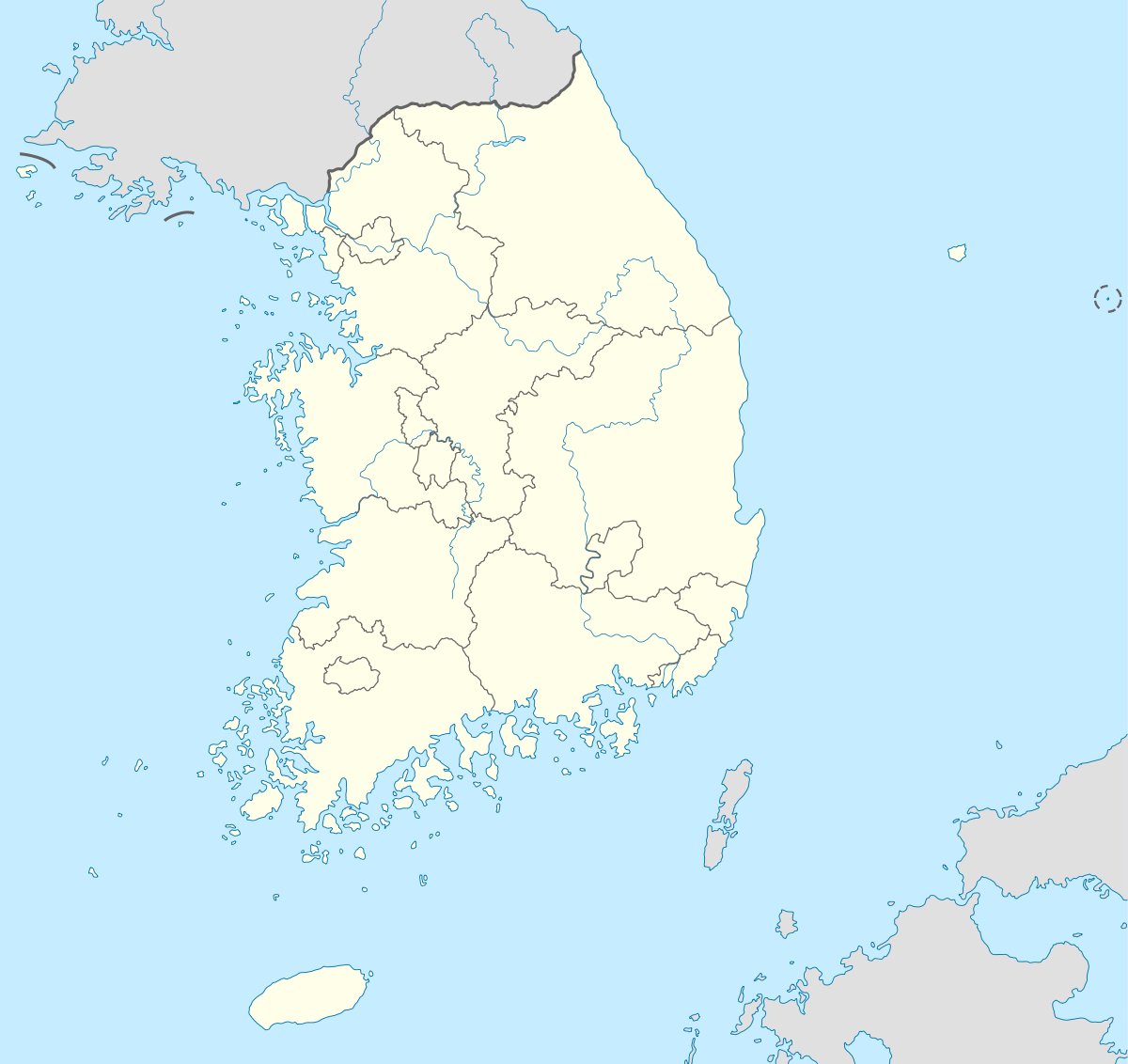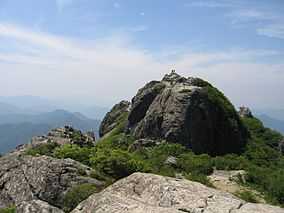Gayasan National Park
| 가야산국립공원, 伽倻山國立公園 | |
|---|---|
| Gaya Mountain National Park | |
|
IUCN category II (national park) | |
|
Sanghwang peak, 2004. | |
| Nearest city | Daegu, South Korea |
| Area | 64.71 sq mi (167.6 km2)[1] |
| Established | 13 October 1972[1] |
| Governing body | Korea National Park Service |

Land-based parks are in red and marine parks are in blue.
| Gayasan National Park | |
| Hangul | 가야산 |
|---|---|
| Hanja | 伽倻山 |
| Revised Romanization | Gaya-san |
| McCune–Reischauer | Kaya-san |
Gaya Mountain National Park, also spelled Kaya Mountain National Park (Korean: 가야산국립공원, 伽倻山國立公園), in South Korea covers an area of more than 160 square kilometers, and extends from the top of South Gyeongsang (경상남도, 慶尙南道) province to the bottom of North Gyeongsang (경상북도, 慶尙北道) province. The Sobaek Mountain range (소백산맥, 小白山脈) runs through this area. On this mountain, there are two major peaks, one of them is Sangwangbong Peak and the height is 1,430 meters but the other, Chulbulbong is 1,433 above sea level. It was declared Scenic Site No. 5 by the Korean government in 1966, and turned into an official national park in 1972.
The main attractions are Haeinsa (해인사, 海印寺), a standing Buddha figure carved into sheer rock face, Yongmun Falls, and Hongnyudong Valley. There are 380 species of plants growing there as well as 100 species of birds and animals roaming free.
Its remoteness played a role in protecting it from destruction in the past, specifically the Japanese invasions of 1592-98, when much of the country was razed. Since that time, it is said that the area around the Gaya Mountains is free from the Three Disasters: fire, floods and wind.
Gallery
-
Gayasan from Haeinsa temple
-
Gayasan from Southeast
-
Ruins of Baekumam temple in Gayasan
-
Gayasan Castle in Gayasan
-
Stone walls near Chilbulbong Peak in Gayasan (1)
-
Stone walls near Chilbulbong Peak in Gayasan (2)
-
Sangwangbong Peak of Gayasan
-
Rituals of Buddhism in Gayasan
-
Haeinsa temple at the foot of Gayasan
-

Stone carved image of the standing Buddha on Mt. Gaya (Korean Treasure No. 222)
References
- ↑ 1.0 1.1 "Gayasan: Intro". Korea National Park Service. Retrieved 18 September 2010.
External links
- The park's page on Korea National Park Service's website
 Gayasan Mountain National Park travel guide from Wikivoyage
Gayasan Mountain National Park travel guide from Wikivoyage- Korea in the Clouds: A Detailed Guide to Hiking Korea's Mountains
- Printable Trailmap of Gayasan (from Korea in the Clouds)
| ||||||||||||||









